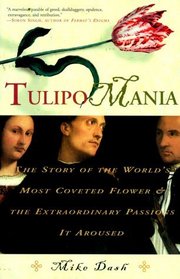Search -
Tulipomania : The Story of the World's Most Coveted Flower the Extraordinary Passions It Aroused
Tulipomania The Story of the World's Most Coveted Flower the Extraordinary Passions It Aroused
Author:
Amsterdam, 1637 — For the cost of a single tulip bulb you could buy: — four oxen or — twelve sheep or — twenty-four tons of wheat or — two hogsheads of wine or — two tons of butter or — four barrels of beer or — a thousand pounds of cheese or — a silver drinking cup or — an oak bed or — a ship. — In the 1630s, visitors to the prosperous trading ... more »
Author:
Amsterdam, 1637 — For the cost of a single tulip bulb you could buy: — four oxen or — twelve sheep or — twenty-four tons of wheat or — two hogsheads of wine or — two tons of butter or — four barrels of beer or — a thousand pounds of cheese or — a silver drinking cup or — an oak bed or — a ship. — In the 1630s, visitors to the prosperous trading ... more »
ISBN-13: 9780609604397
ISBN-10: 0609604392
Publication Date: 2/29/2000
Pages: 288
Rating: 4
ISBN-10: 0609604392
Publication Date: 2/29/2000
Pages: 288
Rating: 4
3.8 stars, based on 4 ratings
Genres:
- Crafts, Hobbies & Home >> Gardening & Landscape Design >> General
- Crafts, Hobbies & Home >> Gardening & Landscape Design >> By Region
- Crafts, Hobbies & Home >> Gardening & Landscape Design >> By Plant >> Tulips




